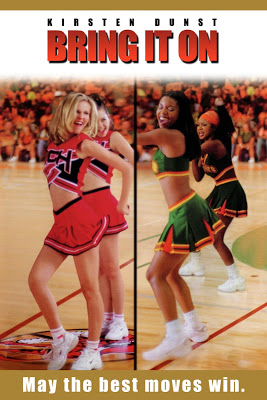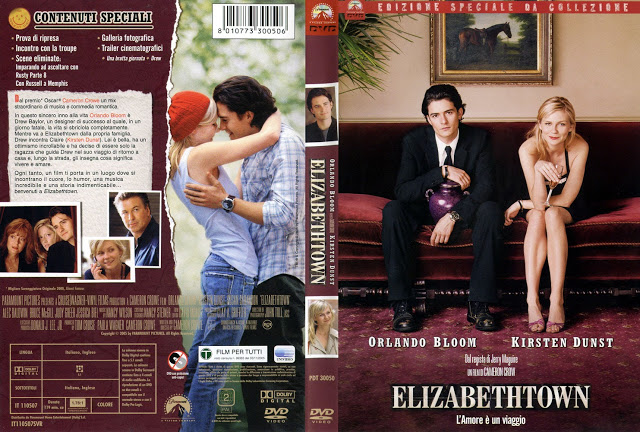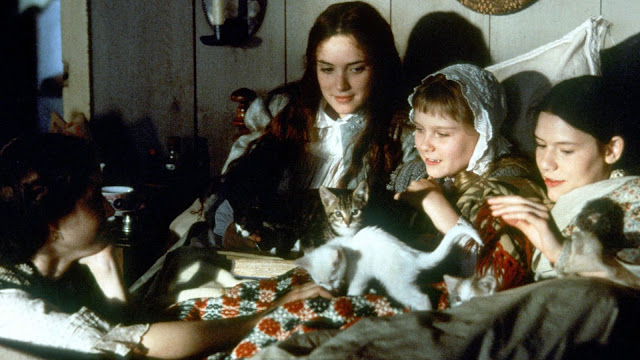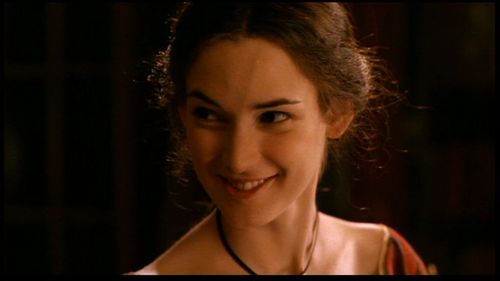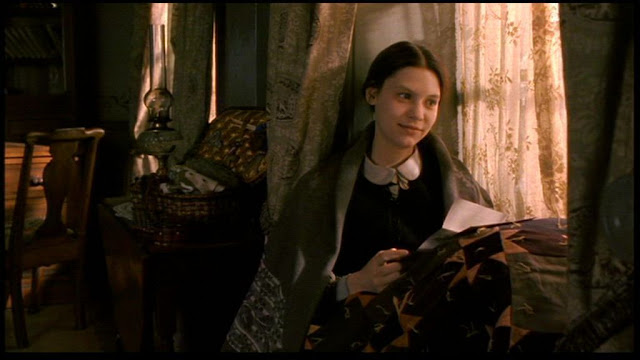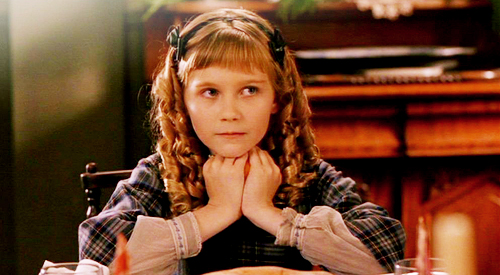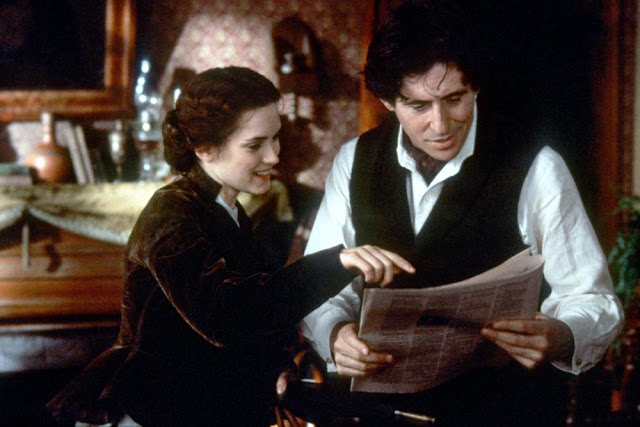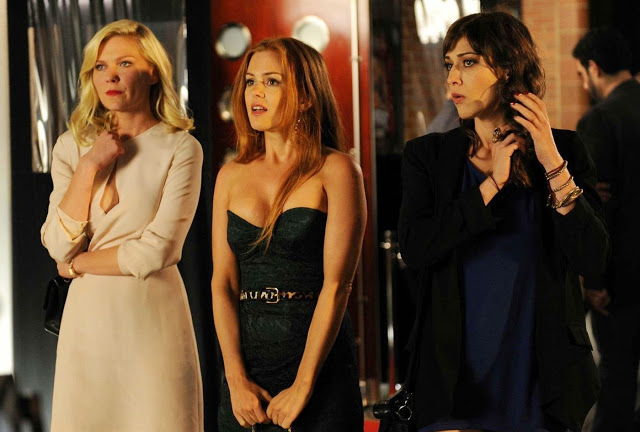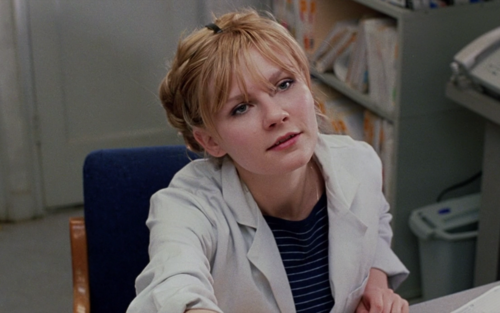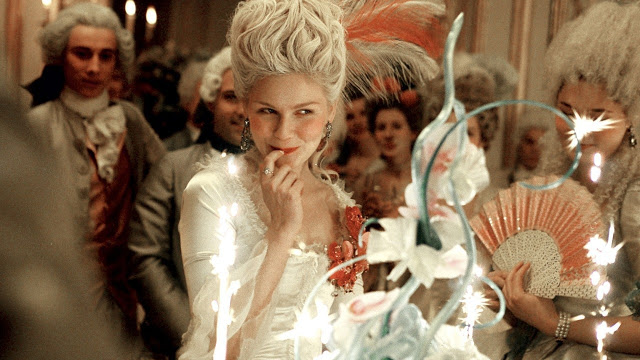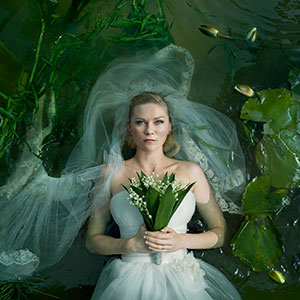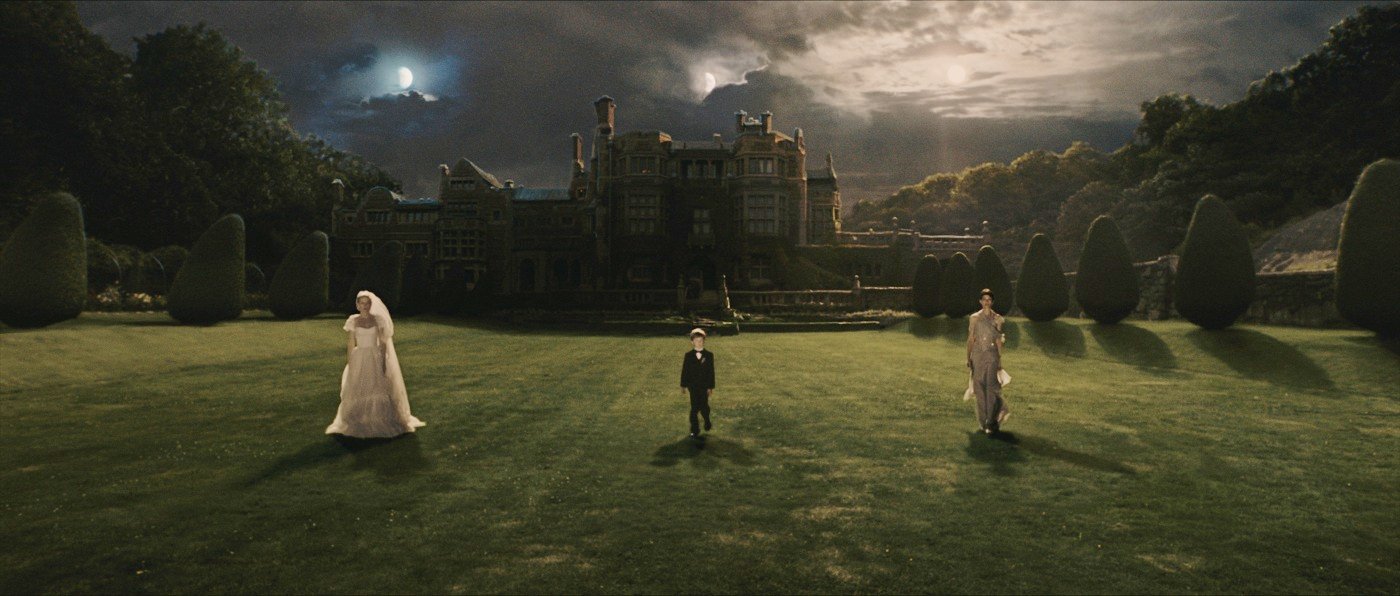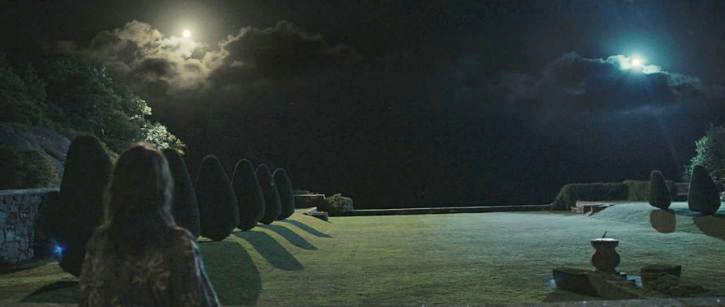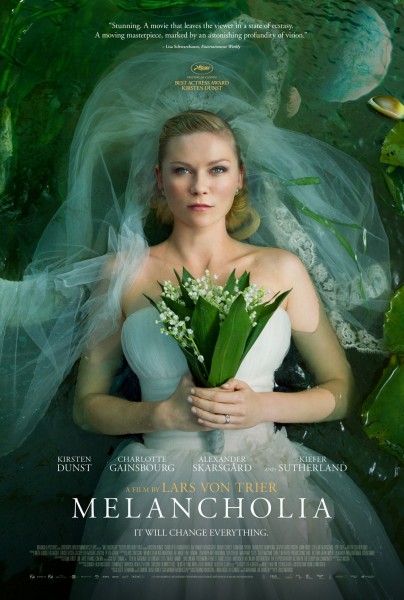This guest post written by Marlana Eck originally appeared at Awaiting Moderation and appears as part of our theme week on Women Directors. Cross-posted with permission.
When it comes to 2006’s Marie Antoinette, some reviewers have ridiculed Sofia Coppola for creating “just another costume drama.” This is simply an attempt to discredit Coppola as a masterful auteur.
In reality, Coppola spent years (starting in 2001) researching the life of Antoinette with support from historian/writer Antonia Fraser, author of Marie Antoinette: A Journey.
Antoinette’s elaborate costuming is much like an ancient grotesque painting, producing both aesthetic endearment and strange sympathetic curiosity at what kind of deficiency the costuming is compensating for. Marie Antoinette herself has become somewhat of a chimera; a piece of the architecture we use to describe decadent aristocracy.
In one of the earliest scenes, Marie Antoinette is investigated to see if her virginity is still intact before being traded from her family in Austria to the French nobility. We see Marie Antoinette as an inmate, not something we would have attributed to her otherwise. Her world is insular and stunted, punctuated by decadent “treats” and passive, objectifying adoration by the court.
What stood out to me as I looked into Marie Antoinette’s life was the politicized severity in her relationships with people who she was supposed to adopt as trusted family. What they had in riches and prestige they lacked in empathy for each other.
As Antoinette approaches Versailles, The Radio Dept. “I Don’t Like It Like This” plays.
Words fail me all the time
I don’t even feel like talking
still I go on and on
I’m dying here and you keep walkingwhy are you asking me this?
can’t you see I’m trying?
I don’t like it like this
no I think I’m dying
Destined to go on as, more or less, a piece of furniture, this song is a flawless companion to the scene. Coppola’s use of contemporary music to generate a better understanding of Marie Antoinette’s condition is noteworthy. Kirsten Dunst is the perfect Antoinette with her few lines and held-back-ness in affect.
Through costuming, Marie Antoinette was able to attach a feeling of specialness she did not feel otherwise. Surrendered as a bargaining prize by her family at the age of 15, Coppola portrays the intense amount of watchfulness, and little love, she was exposed to.
As much as I am hard on Hillary Clinton, how much of these parallels can be drawn in her life? Here is another woman dedicated to a system of striving which is part of structural and damaging patriarchy. For Marie Antoinette, it was her flamboyance which helped her declare agency. For other women, maybe it’s joining the “boys club” however oppressive that may be (to others and the self).
Coppola shows that Marie Antoinette was merely using the language of power she had available. To delve further, Coppola’s Marie Antoinette was attracted to anything which helped her portray the eminence she felt she lacked in personhood.
Marie Antoinette was truly a prelude to our DeBordian society of spectacle, or, even more contemporarily (and French) Tiqqun’s Preliminary Materials for a Theory of the Young Girl. How different is the reluctant Queen’s high profile folly than anyone else we worship in television or magazines? I’d argue even the modern Kim Kardashian’s life is decidedly martyred and politicized while the cultural roots of her decadence are not so easily scrutinized by the public. The Young Girl is a figure that is both revered and despised.
We can learn much about nobility in this film, whether it is historical past or our nobility at present. As much as people feel dehumanized at the level of working class, we also elevate the “elite” to the level of gods, giving them both immense privilege and unreachable humanitarian expectations.
One reviewer said, “Only an American” would depict Antoinette so sympathetically. But that misses the dichotomy of the grotesque. There is culpability in the culture which creates their iconic demons, the ones which attract and repulse us.
Jason Schwartzman as the reticent ruler Louis XVI says, “Lord God, guide us and protect us, for we are too young to rule.” How true is this of our modern media aristocracy? As we scrutinize politicians and the glitterati alike, shouldn’t we be mindful that they don’t much know what they are doing either?
Coppola shows us Marie Antoinette’s range of human qualities: most movingly that giving up to decadence is easy when love or agency is absent.
In discussions with Antonia Fraser, Coppola reportedly asked her if it was alright for her to leave the political bits out. Fraser remarked that Marie Antoinette would have “loved that.” Funny though, because what I see on screen, at times, is a cleverly wrought political drama in the tradition of “the personal is political.” This phrase becomes much clearer and richer in the life of Marie Antoinette as depicted by Coppola. Here was a girl (then woman) whose entire life was used as a political bargaining chip — from birth it was destined, and her death in an unmarked grave could only be so appropriate for someone whose only told purpose was to be a fancy prop to represent aristocracy.
Coppola’s choice not to show Marie Antoinette’s brutal death instead makes us focus on how cultures worship and dehumanize icons. Coppola does a masterful job of showing how this woman (Marie Antoinette) is only praised when she shows a complete lack of agency (being traded off, marrying someone she doesn’t know, obeying the rules she finds “ridiculous”) and scorned when she does the things which allow her to have agency (buying things, having an affair, having a barn built to experience something new).
Coppola leaves me with questions: why was Marie Antoinette asked to answer to a French public who had monarchs for centuries? Only her? How would they have her respond?
Big questions loom after watching Coppola’s film that defy what we believe about nobility.
Coppola’s film conveys, to me, a range of feminist concerns through history. Concerns of how much agency, even in a culture of affluence, women can wield given that so much of women’s lives are dictated by the structures of patriarchy.
See also at Bitch Flicks: Sofia Coppola’s ‘Marie Antoinette’ Suprisingly Feminist; Sofia Coppola and The Silent Woman
Marlana Eck is a scholar, writer, and educator from Easton, Pennsylvania. Her writing has appeared in The Chronicle of Higher Education, Raging Chicken Press,Hybrid Pedagogy, San Diego Free Press, Cultured Vultures, Lehigh Valley Vanguard, and Rag Queen Periodical. At the latter two publications she serves as director. In her free time she enjoys horticulture and overestimating the efficacy of her dance moves in the living room mirror. Follow her on Twitter at @marlanaesquire.









